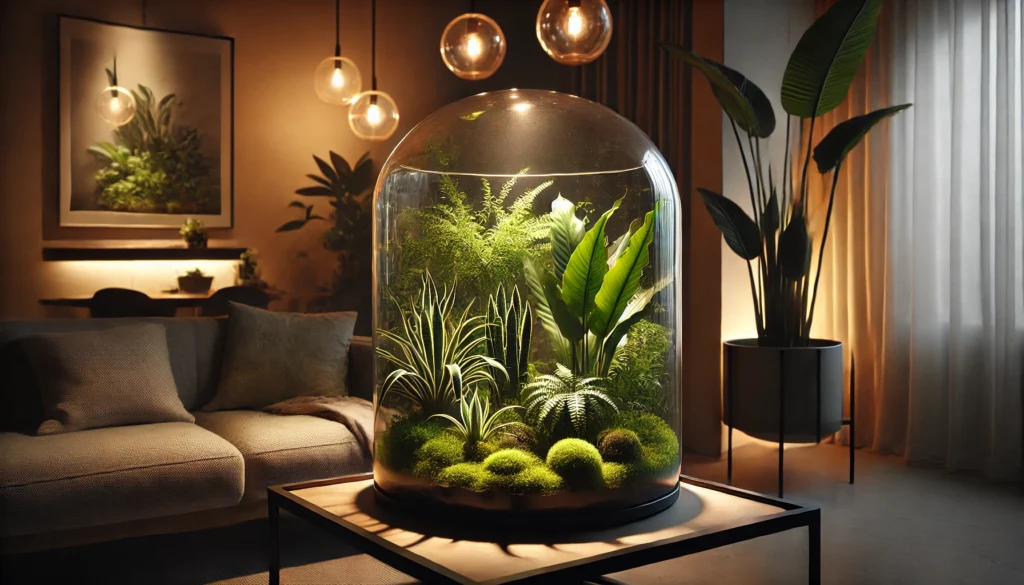
Creative Low-Light Terrarium Ideas: Perfect Plants for Dim Indoor Spaces
Are you dreaming of creating a lush, green terrarium but worried about your dimly lit indoor spaces? You’re not alone! Many plant lovers struggle with low-light conditions, but the good news is that there are plenty of beautiful plants that thrive in these environments. In this article, we’ll explore creative low-light terrarium ideas that will allow you to bring a bit of nature indoors, even in the darkest corners of your home. Whether you’re a seasoned terrarium enthusiast or just starting, these low-light-friendly plants will help your terrarium flourish without the need for bright sunlight.
Table of Contents
ToggleWhy Choose a Low-Light Terrarium?
A low-light terrarium is an excellent option for anyone looking to bring greenery into spaces with limited sunlight. These compact, enclosed ecosystems offer a unique and easy way to enjoy plants indoors, even in environments that may not be ideal for traditional houseplants.
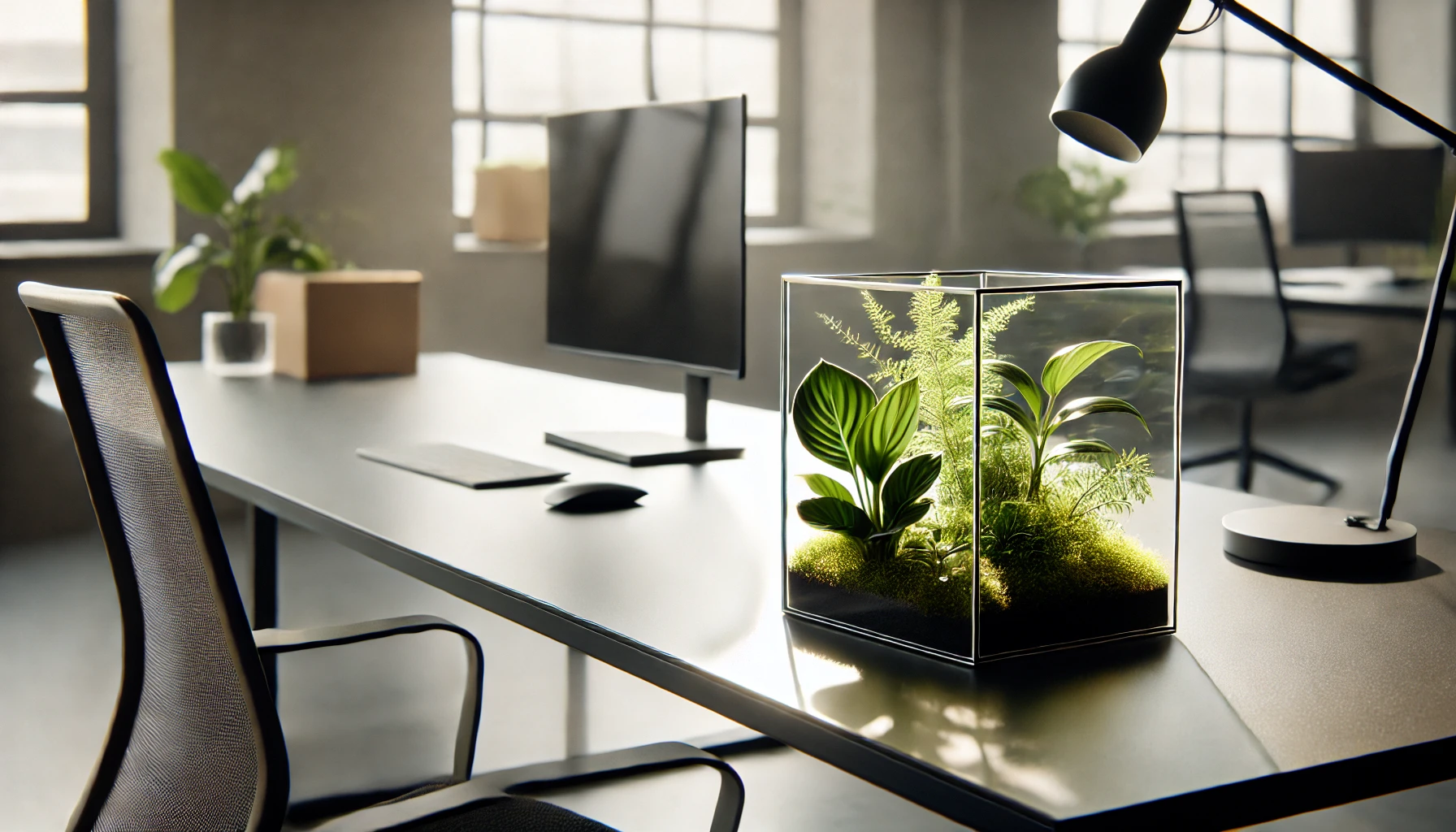
Perfect for Low-Light Areas: If your home or office has rooms that receive minimal sunlight—like basements, bathrooms, or north-facing spaces—a low-light terrarium is the perfect solution. It allows you to create a thriving plant environment without needing direct sunlight.
Low Maintenance: Low-light terrariums typically feature plants that require minimal care. These plants are adapted to low-light conditions and don’t need frequent watering or constant attention, making them perfect for busy individuals or beginners in gardening.
Space-Saving and Aesthetic Appeal: A low-light terrarium takes up very little space while offering visual interest and natural beauty. Whether on a desk, shelf, or tabletop, it adds a touch of greenery without overwhelming the space.
Ideal for Small Plants: Terrariums are ideal for small, low-light plants such as ferns, moss, and certain types of succulents. These plants thrive in the contained environment of a terrarium, where humidity and temperature are regulated.
Air Purification: Just like other houseplants, plants in low-light terrariums can help purify the air. They absorb carbon dioxide and release oxygen, improving the air quality in your home or office.
Choosing a low-light terrarium provides a practical and stylish way to bring nature indoors, especially if your space lacks natural light. With minimal upkeep and beautiful, thriving plants, it’s an easy and rewarding way to enhance your surroundings.
Top Plants for Low-Light Terrariums
Creating a low-light terrarium can be a rewarding way to bring greenery into spaces with minimal natural light. Choosing the right plants is crucial for success. Here are the best plants for low-light terrariums, each thriving in indirect or dim light conditions.
Snake Plant (Sansevieria trifasciata):
Snake plants are tough and thrive in low-light environments. Their upright, architectural leaves come in various shades of green and are nearly indestructible, making them ideal for beginners. They also help purify the air, adding extra value to your terrarium.
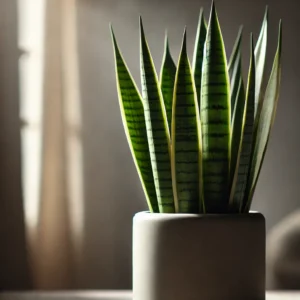
Ferns (Nephrolepis exaltata):
Ferns like the Boston fern do well in low light and high humidity. They add a lush, feathery texture to terrariums, making them an excellent choice for creating a tropical vibe. Keep the soil moist but not soggy for the best growth.
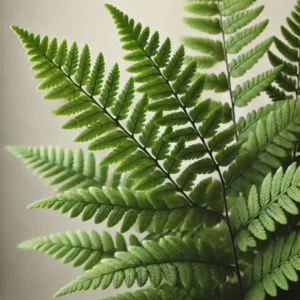
Pothos (Epipremnum aureum):
Pothos is a popular, easy-care plant that thrives in low-light conditions. Its trailing vines can grow long, creating a cascading effect in your terrarium. Pothos can tolerate less frequent watering and low light, making it perfect for beginners.
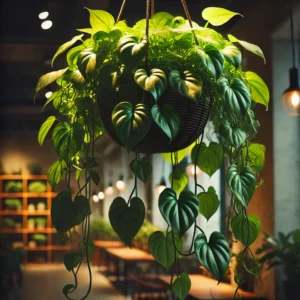
ZZ Plant (Zamioculcas zamiifolia):
The ZZ plant is known for its glossy, dark green leaves and its ability to thrive in near-complete darkness. It’s very low-maintenance, requiring only occasional watering and minimal light, making it perfect for low-light terrariums.
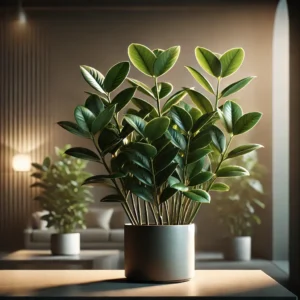
Peace Lily (Spathiphyllum):
Peace lilies are beautiful, flowering plants that can tolerate low light. Their white blooms add elegance to any terrarium. Keep them moist but not soggy, and they will thrive in a low-light environment.
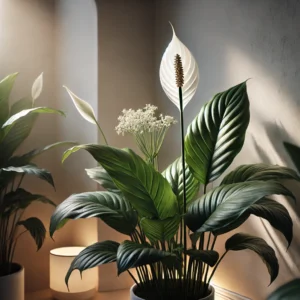
Calathea:
Calathea plants are known for their stunning, patterned leaves. They prefer indirect, low light and high humidity. Calatheas are sensitive to changes in temperature, so keep them in a stable, warm spot within your terrarium.
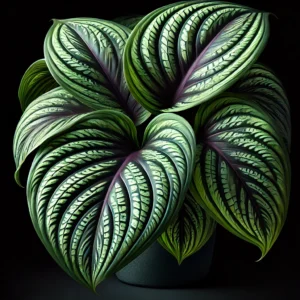
Mosses (Various species):
Moss is an excellent addition to low-light terrariums, adding texture and a natural feel. Mosses thrive in shaded environments and help maintain humidity, making them a perfect ground cover for a low-light setup.
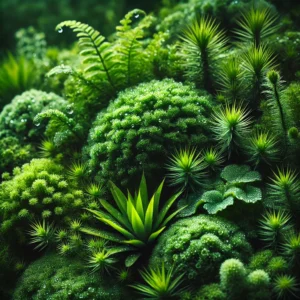
When setting up your low-light terrarium, make sure to avoid direct sunlight, which can overheat and damage these plants. Regular misting or placing the terrarium in a humid room will also help these plants thrive. With the right care, these low-light-loving plants will flourish, adding a touch of nature to any indoor space.
Designing Your Low-Light Terrarium
Creating a low-light terrarium is a great way to showcase beautiful plants in spaces with limited sunlight. With the right approach, you can design a thriving, low-maintenance ecosystem that adds a touch of greenery to any room.
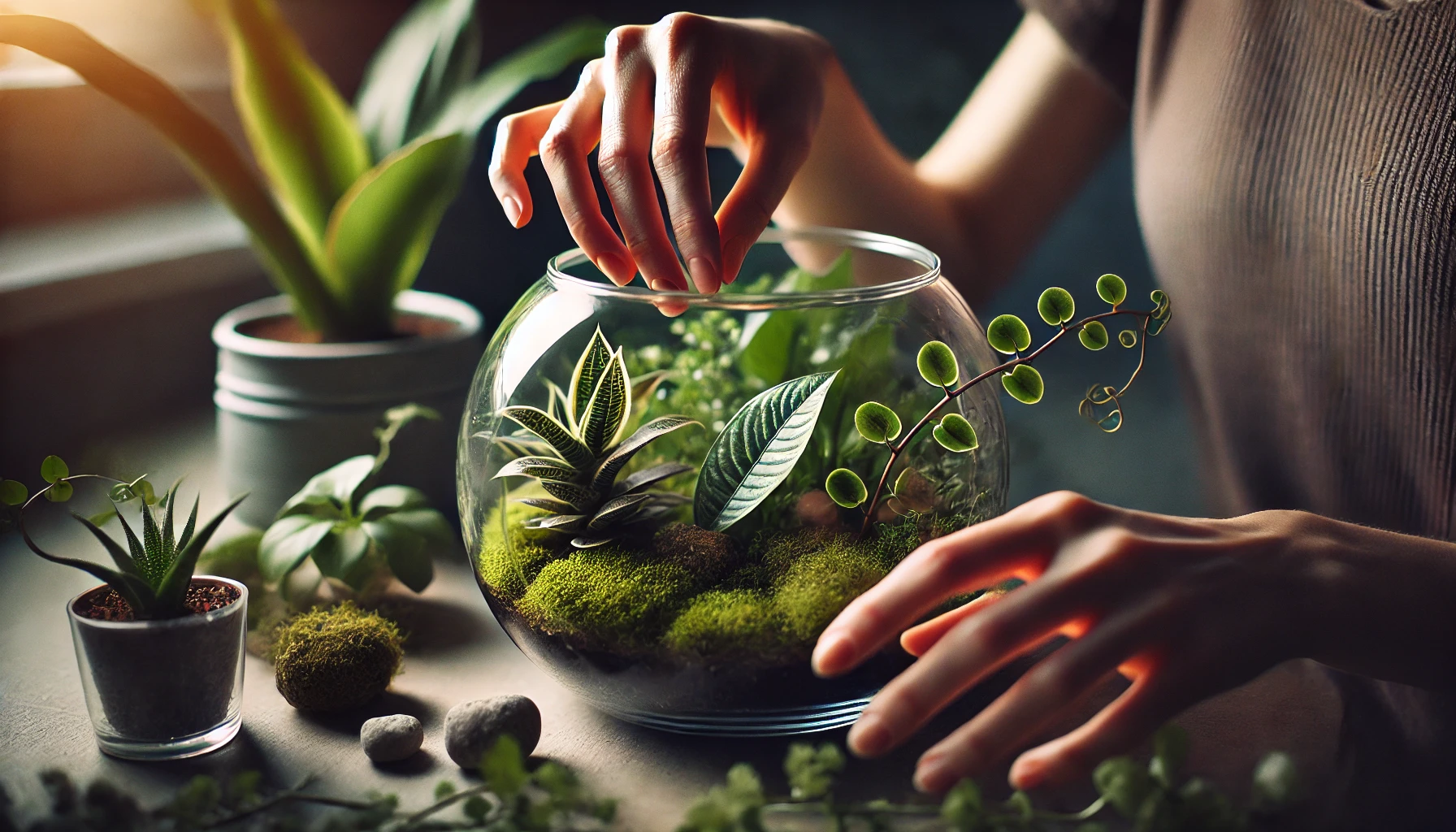
Choose the Right Plants: Select plants that thrive in low light. Some popular options include the snake plant, cast iron plant, ferns, peace lily, and pothos. These plants can tolerate minimal light while still growing well, making them perfect for a terrarium setup.
Lighting Considerations: Since your terrarium will be in a low-light space, choose a location that receives indirect light. You can also use artificial grow lights if natural light is extremely limited. LED grow lights are energy-efficient and ideal for low-light environments.
Container Selection: The type of container you choose is crucial. Glass containers like jars, bowls, or specialized terrarium tanks help with humidity control, which is essential for most low-light plants. Ensure the container has a good size for air circulation, but without too much open space.
Soil and Drainage: Use well-draining soil to prevent waterlogging. A mix of cactus or succulent soil with organic matter can provide good drainage while retaining moisture. Include a layer of small rocks or gravel at the bottom of the container to help with drainage and prevent root rot.
Arranging Your Plants: Arrange the plants thoughtfully to ensure each one gets enough space to grow. Place taller plants in the back and smaller ones in the front. This allows for better visibility and airflow, which is essential for healthy plant growth.
Moisture Control: Low-light plants typically require less frequent watering. Be sure to let the soil dry out between waterings to prevent excess moisture buildup. Too much water can lead to mold or fungal issues, especially in a closed terrarium.
Decorative Touches: Add decorative elements such as small rocks, moss, or figurines to give your terrarium a personalized touch. Just be mindful not to overcrowd the plants or hinder airflow.
With these simple tips, you can create a stunning low-light terrarium that requires minimal upkeep while adding a beautiful, green atmosphere to your home.
Low-Light Terrarium Care Tips
Creating a low-light terrarium is a great way to bring greenery into spaces with limited sunlight. Many plants thrive in these conditions, but they require specific care to stay healthy. Here are some expert tips for maintaining your low-light terrarium.
Choose the Right Plants: Select plants that naturally thrive in low-light environments. Popular choices include ferns, air plants, moss, snake plants, and cast iron plants. These species are well-suited to lower light and can flourish with minimal attention.
Provide Indirect Light: Even low-light plants need some light to thrive. Place your terrarium near a window with indirect sunlight or in a well-lit room. Avoid direct sunlight, as it can overheat and dry out your plants. A north-facing window is often ideal.
Proper Humidity: Terrariums are naturally humid environments, which most low-light plants prefer. Keep the lid on your terrarium to maintain moisture levels, especially in drier climates. If the air inside becomes too dry, lightly mist the plants with water.
Watering: Overwatering is a common issue in terrariums. Low-light plants usually need less water, so allow the soil to dry out slightly between waterings. Ensure your terrarium has proper drainage to prevent water from sitting at the bottom, which can cause root rot.
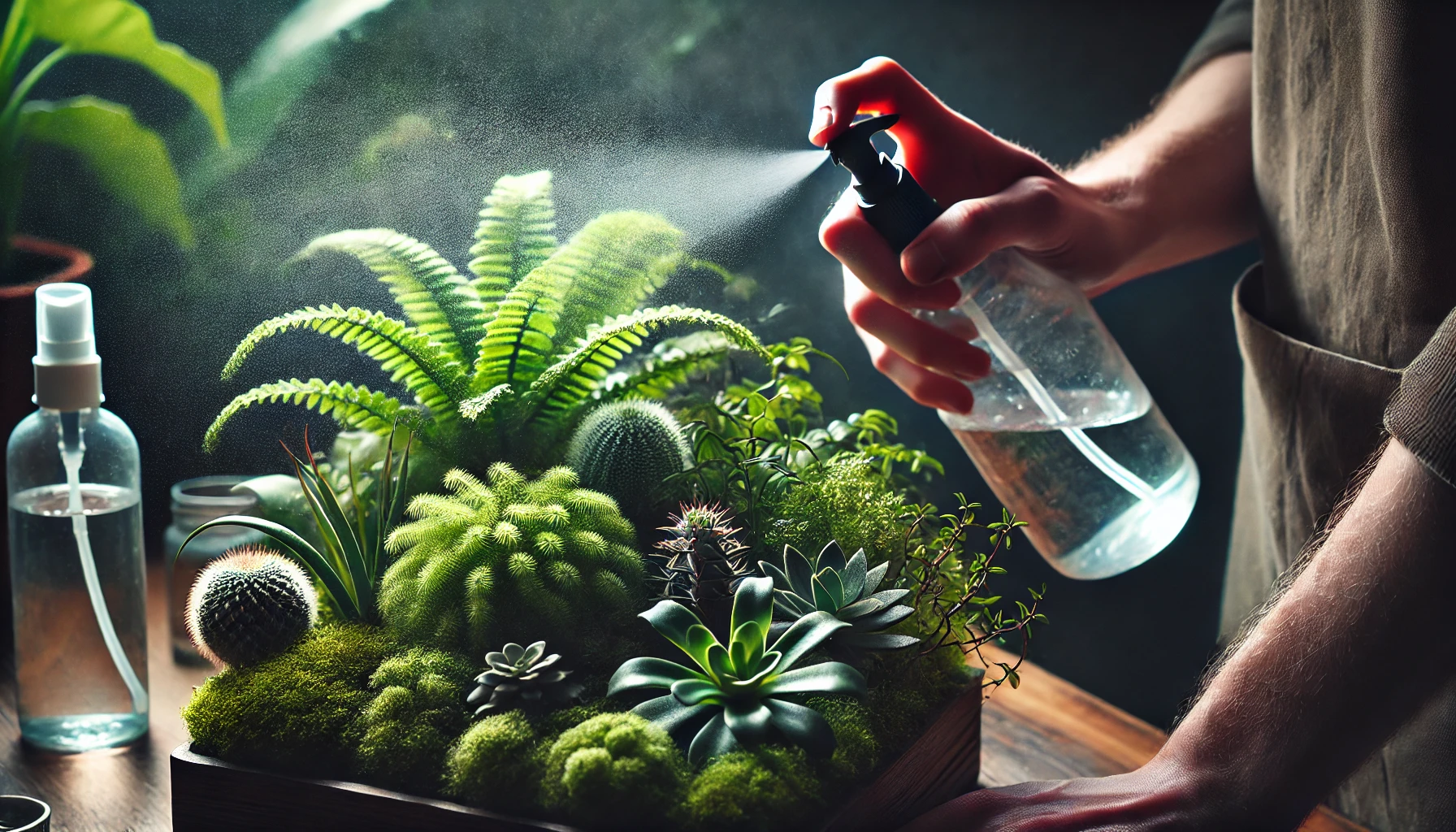
Avoid Overcrowding: While it’s tempting to add many plants to your terrarium, overcrowding can restrict airflow and light, making it harder for plants to thrive. Keep space between plants to allow for healthy growth and air circulation.
Regular Cleaning: Remove any dead leaves or debris to prevent mold and fungi from developing. Wipe the glass occasionally to keep it clear and allow light to reach the plants.
Fertilization: Low-light plants don’t need heavy feeding. Use a diluted, balanced fertilizer once every 6-8 weeks during the growing season to promote healthy growth. Avoid overfertilizing, as it can harm the plants.
By following these simple tips, you can create a thriving low-light terrarium that brings vibrant greenery into your space with minimal effort.
Common Problems in Low-Light Terrariums and How to Fix Them
Low-light terrariums are a great way to grow plants indoors, but they can come with their own set of challenges. Here are some common problems you might encounter and practical solutions to fix them:
Leggy, Spindly Growth
- Problem: Plants in low-light terrariums may stretch toward the light, resulting in thin, weak stems.
- Solution: Move the terrarium to a brighter location with indirect sunlight or supplement with grow lights. Trim the leggy stems to encourage bushier growth.
Yellowing Leaves
- Problem: Yellow leaves are a sign of stress and can be caused by insufficient light or overwatering.
- Solution: Ensure the terrarium is getting enough indirect light. Check soil moisture regularly and water only when the top inch of soil feels dry to avoid root rot.
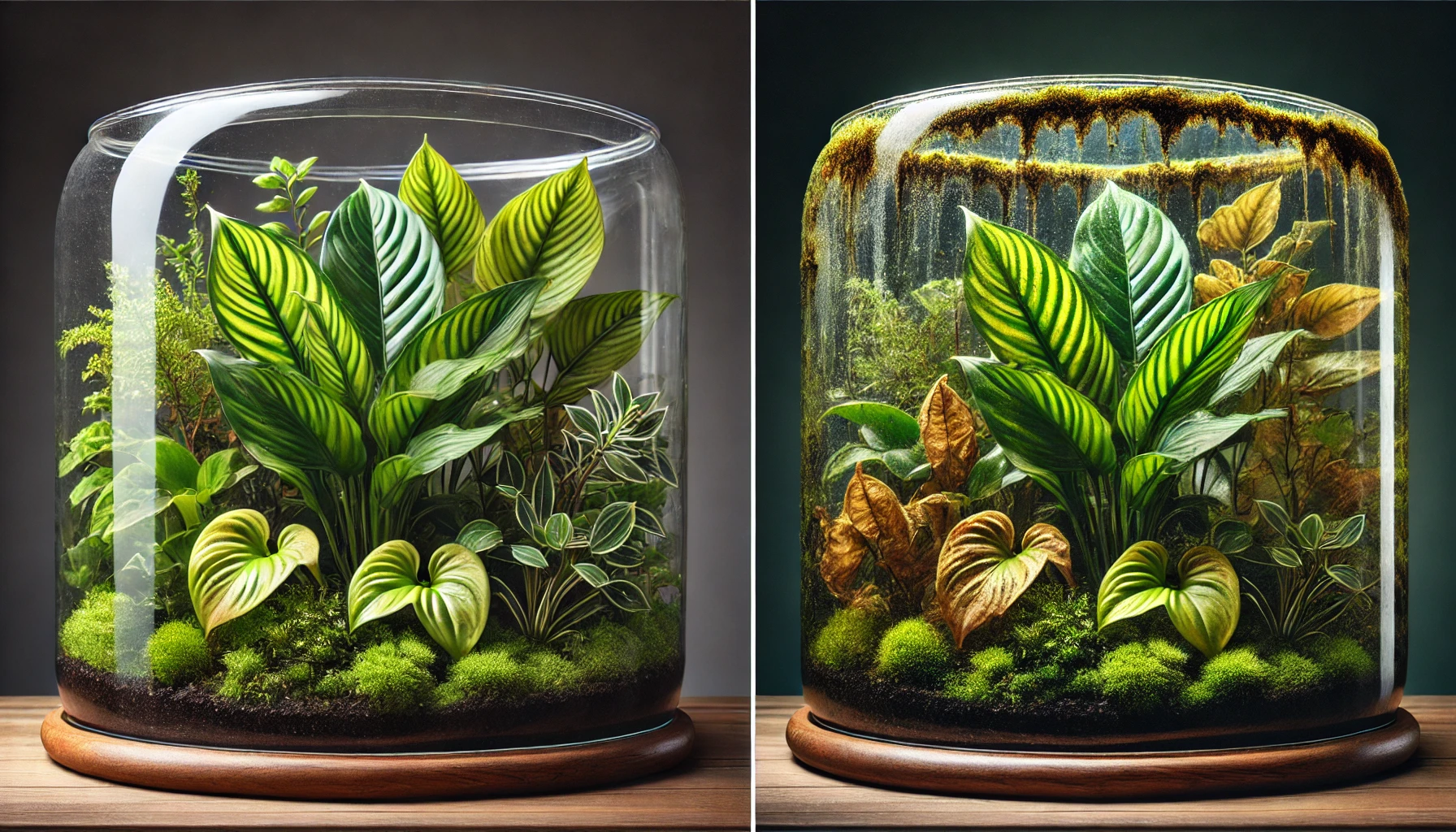
Mold or Fungal Growth
- Problem: High humidity and poor air circulation in low-light terrariums can promote mold growth.
- Solution: Increase airflow by opening the terrarium occasionally or by using a small fan. Avoid overwatering and ensure the lid is not trapping too much moisture.
Stunted Growth
- Problem: Plants in low-light environments often fail to thrive and grow at a slower rate.
- Solution: Choose plants that thrive in low light, like ferns, mosses, or snake plants. If needed, introduce a grow light to boost plant health and growth.
Brown or Crispy Leaves
- Problem: Brown tips can be caused by dry air or underwatering, often worsened by low-light conditions.
- Solution: Increase humidity by misting plants or adding a humidity tray. Adjust watering by keeping the soil moist but not waterlogged.
Leaf Drop
- Problem: Plants in low-light terrariums may shed leaves due to stress from inadequate light.
- Solution: Move the terrarium to a brighter area, and ensure you’re not overwatering, which can also lead to leaf drop.
By recognizing and addressing these common problems, you can ensure your low-light terrarium remains healthy and vibrant.
Creating a low-light terrarium is an excellent way to bring nature indoors, especially in spaces where sunlight is limited. By choosing the right plants—such as Snake Plants, ZZ Plants, and Peace Lilies—you can create a vibrant, thriving terrarium that requires minimal sunlight while still offering a lush, green environment. Remember, with the right care and attention to humidity, watering, and placement, your low-light terrarium will not only beautify your space but also provide a calming, natural atmosphere.
So, whether you’re a beginner or an experienced plant enthusiast, don’t let low light hold you back. Embrace the possibilities with creative low-light terrarium ideas, and start building your own little indoor oasis today!
Frequently Asked Questions(FAQ)
What are the best plants for a low-light terrarium?
The best plants for a low-light terrarium include Snake Plants, ZZ Plants, Peace Lilies, Pothos, Fittonia (Nerve Plant), and various ferns like Boston and Maidenhair ferns. These plants thrive in dim conditions and require minimal sunlight to flourish.
How do I create a low-light terrarium?
To create a low-light terrarium, choose a suitable container (glass jar, globe, or open terrarium), layer it with drainage materials like stones and charcoal, and fill it with a mix of well-draining soil. Add plants that thrive in low light, such as the ones listed above, and ensure the terrarium is placed in a spot with indirect light.
Can low-light terrariums work in windowless rooms?
Yes, low-light terrariums can work in windowless rooms, but it’s important to provide them with artificial light if natural light is nonexistent. Using a grow light can help ensure your plants receive the necessary light to thrive.
How much light do low-light terrariums need?
Low-light terrariums require minimal but indirect light. They should be placed in a spot that doesn’t receive direct sunlight, such as a room with a north-facing window or a shaded area. If needed, you can supplement with artificial light to keep plants healthy.
How often should I water a low-light terrarium?
Watering frequency depends on the plants in your terrarium. In general, low-light terrariums need less frequent watering because the plants grow slower. Water only when the top inch of soil is dry, and always ensure proper drainage to prevent waterlogging.
Do low-light terrariums need humidity?
Yes, many plants in low-light terrariums, like ferns and Fittonia, thrive in a humid environment. To maintain humidity, mist the plants occasionally or consider using a humidity tray to keep the moisture levels in check.
Can I add decorations to my low-light terrarium?
Absolutely! You can personalize your low-light terrarium with decorative elements like small stones, figurines, colored sand, or moss. Just make sure the decorations don’t overcrowd the plants or obstruct light from reaching them.
How do I prevent mold or fungus in my low-light terrarium?
To prevent mold or fungus, avoid overwatering and ensure good drainage in your terrarium. It’s also important to leave the lid off occasionally to allow air circulation. If mold appears, remove it promptly and check for any signs of overwatering.
How do I know if my plants are not getting enough light?
Signs that your plants may not be getting enough light include leggy growth, yellowing leaves, or stunted growth. If this happens, try moving the terrarium to a brighter spot or supplementing the light with a grow light.
Can I use artificial light for my low-light terrarium?
Yes, you can use artificial light to supplement natural light, especially in spaces with limited sunlight. LED grow lights or fluorescent lights work well for providing the right light spectrum that encourages plant growth without the need for direct sunlight.
